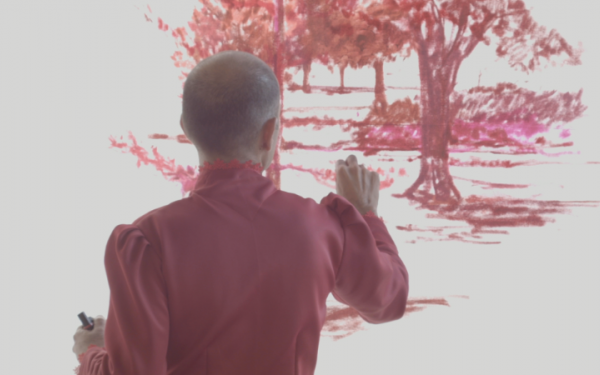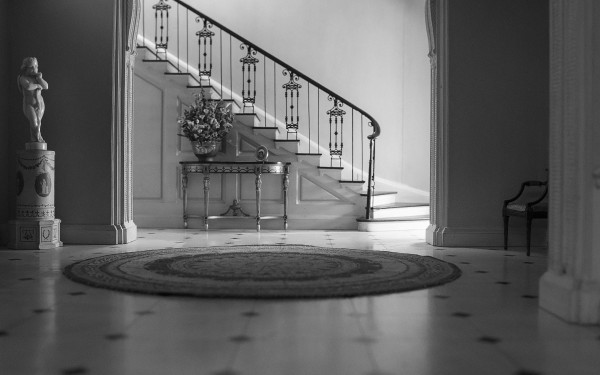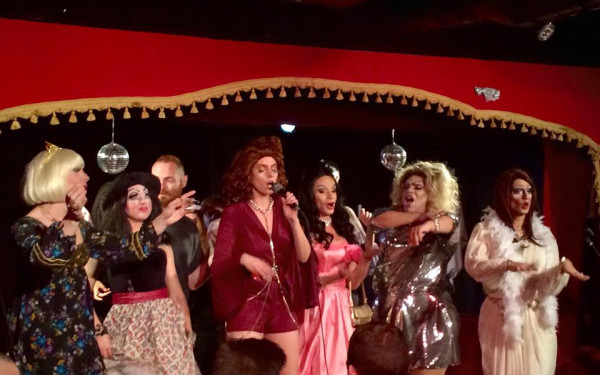Naked and Empowered
Scarlett James Revisits Art of Burlesque for Montreal’s Burlesque Festival
I walked into a vanilla-scented, hazy red room, feathers tickling me, jazz music buzzing—and the sight of beautiful, unassuming breasts welcoming me.
“I’m here out of curiosity,” said a 54-year-old Montrealer, Jean-Michel (no last name), out on the town for a date. “And the beautiful women,” he added quickly, looking at his girlfriend.
The seventh edition of the Montreal Burlesque Festival welcomed performers from all over the world dressed in their skimpiest G-strings and pasties to tease the all-aged, all-inclusive, gendered and non-gendered audience.
“Montreal is a city of entertainment, it’s part of our history,” said Scarlett James, who founded the festival. She re-invented burlesque in Montreal, creating a mystifying aura around the art form. Throughout the years, burlesque had been reduced to its declining form, stripping. Scarlett James was determined to put some class back into the art.“It’s about the art of sensuality,” she said.
She circled the room two hours before the show, glass of white wine in hand, kissing friends and posing for photos. She was dressed in a white and black kimono; make-up and hair pristine. Painted on the left side of her cheek was a beauty mark.
“We celebrate women here, that’s why we have so many different looks. There are all kinds of forms of beauty, and we want to highlight that,” said James.
The festival was held in partnership with Anorexia and Bulimia Quebec, an association that aims to prevent eating disorders among teenagers and adults in Quebec.
Later, I bumped into Scarlett James backstage struggling to get dressed in front of the mirror. She was tightening the laces on her pink, shimmering bustier.
In her next stage appearance for the night, Scarlett James came out of a three-storey cake, zipped down that same bustier in under 10-seconds, exposing her perfectly shaped breasts to the audience with a quirky, flirty wink.
There were eight burlesque acts in the night, a mix of solo and troop performances. Each was more surprising than the last. The costumes were like eye candy, the dancing, athletic, but sensual, and the striptease, mesmerizing.
Billy L’Amour hosted the show for the first time this year. She made the crowd feel comfortable, addressing the audience in her deep, purring voice. When she sang, she reached jaw-dropping notes that only a drag queen could make sound natural. With her blue hair, pink and black satin dress and long black plastic gloves, she laughed at herself trying to walk up the stairs in her high heels and confining dress.
“I have to admit that my French is not very good. But my French kisses…” flirted L’Amour with a person in the audience.
The whole evening was like an overly stimulating foreplay act. The dancers moved slowly, prolonging the act of undressing until, at the very end, naked, they cupped their breasts, only letting go for a few seconds at a time. Always too soon, the curtains closed or the ladies twisted and turned their bare ass backstage. They were wooed and applauded by a curious audience.
“It’s not about objectifying women,” clarified Scarlett James
“Getting naked for getting naked, that’s not what burlesque is about. We have topless bars for that,” said Benjamin Marquis who has hosted the show for five consecutive years now. That night he was part of the audience, but he would be in front of them the next two nights of the festival.
Headliner, founder and organizer of the festival Scarlett James created the first ever Burlesque Festival in Montreal in 2008 after seeing a revival of the art form around the world.
Burlesque was first popularized in Montreal between the 1930s and 1950s. Burlesque shows were the highlight of cabaret nights in the city, and Lili St. Cyr the most famous show girl in town.
Eventually, Montreal “cleaned up” the city and burlesque was banished, according to Scarlett James. When Mayor Jean Drapeau took office in 1954, and again in 1960, he made it his personal mission to prohibit any of the “illicit” activities that previously branded Montreal international capital of vice and corruption. These new policies demonized burlesque, claiming it was immoral.
Later, burlesque regained popularity. Rather than being seen as a threat to public morality, it became part of the counterculture. Today, burlesque shows are popping up on St. Laurent Blvd. at popular clubs like the Wiggle Room, where the after parties of the festival were held this year.
Burlesque is an art form that allows women to express their femininity. The act of stripping and dancing on stage is sensual rather than sexual. It’s the art of courting and romance.
The subculture of burlesque has been associated with the queer culture throughout history. It was a way for the LGBT community to reclaim their sexuality. Sex was often classified as a taboo form of expression, but burlesque demystified that assumption. At the time when burlesque was popular, the belief about queer women was that they were butch and not sensual, and that the men were macho.
Burlesque shows have opened up the way for a whole other kind of self-expression where individuals of all types are welcomed and encouraged to explore their sexuality.

_600_832_s.png)

TheCube_820_373_90_600_375_90_s_c1.jpg)


